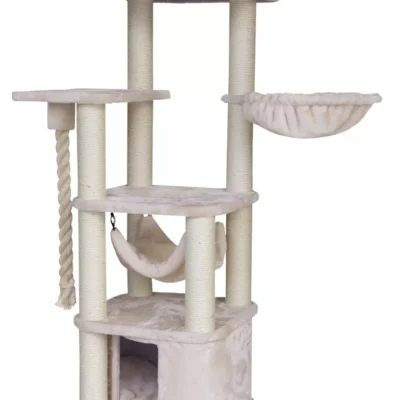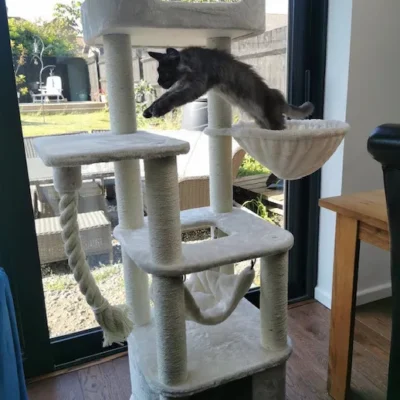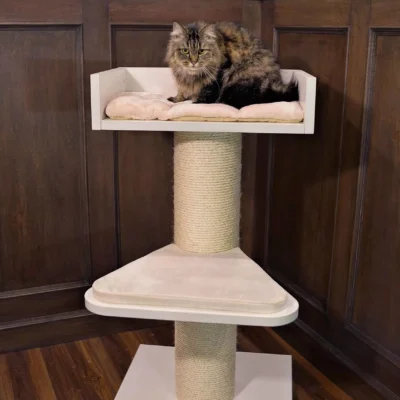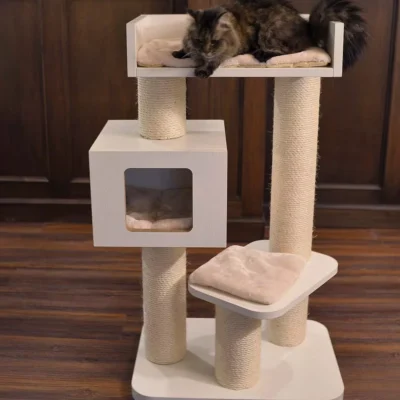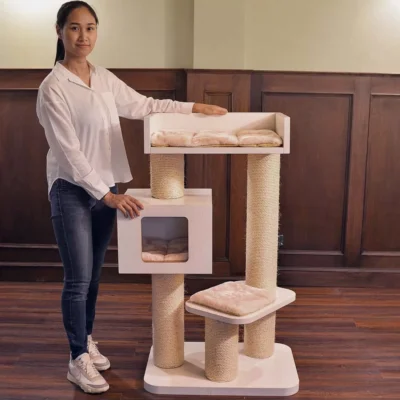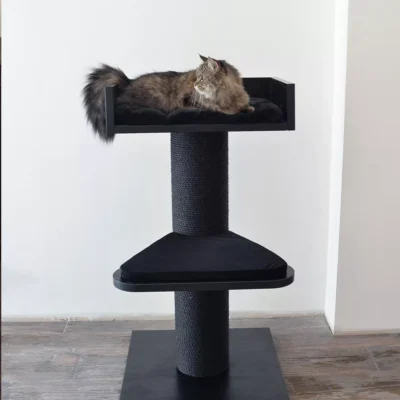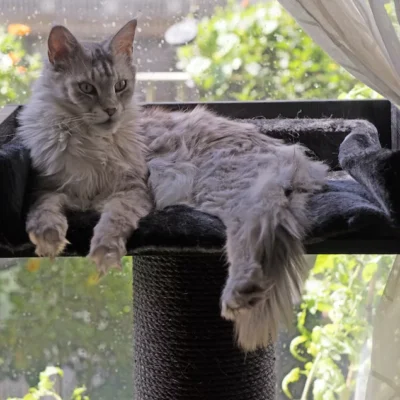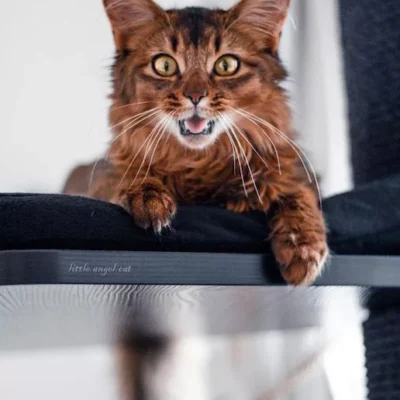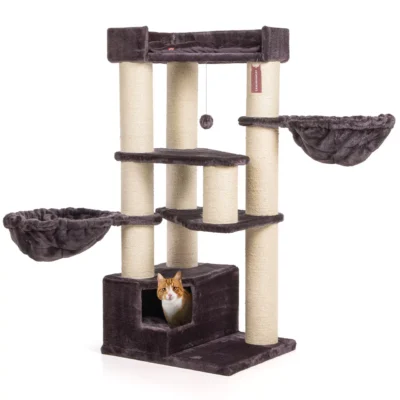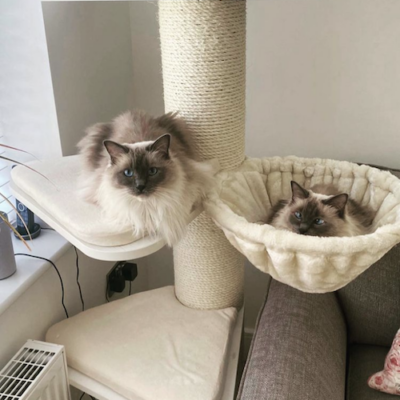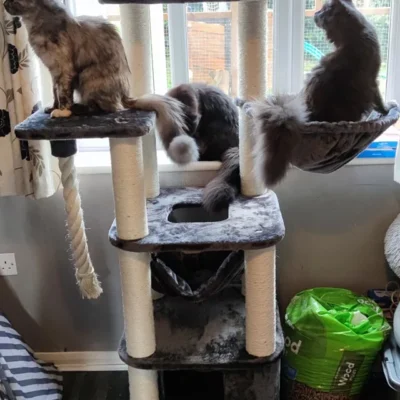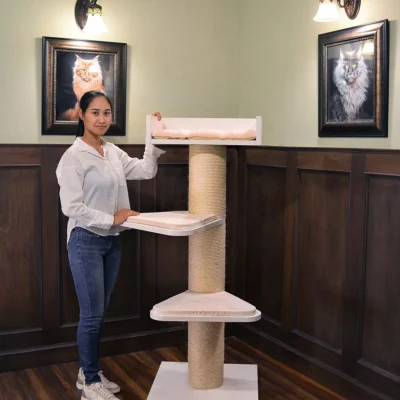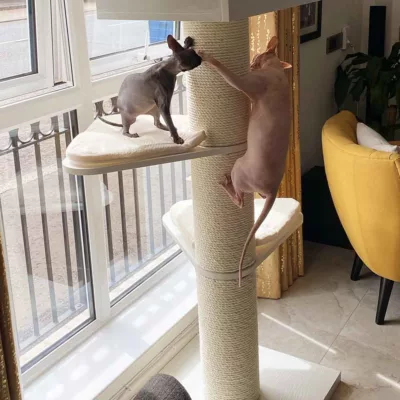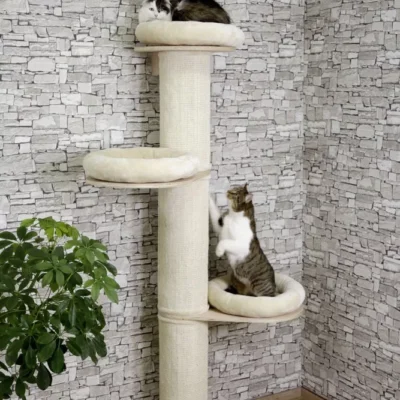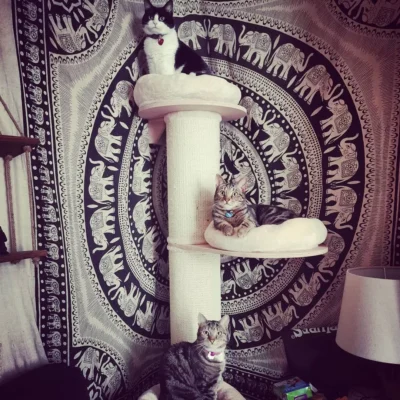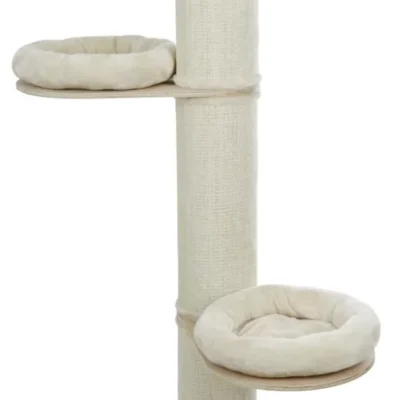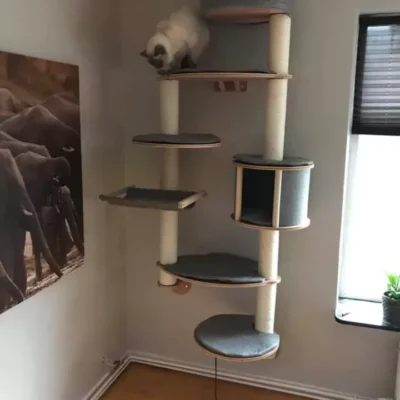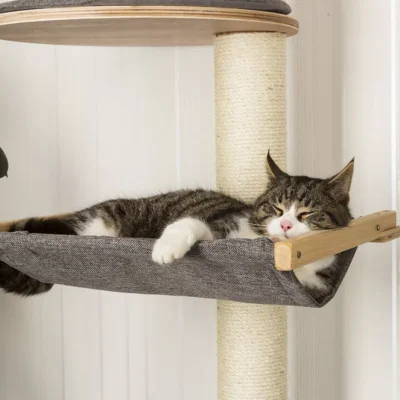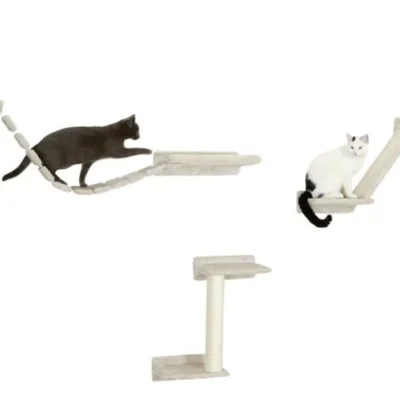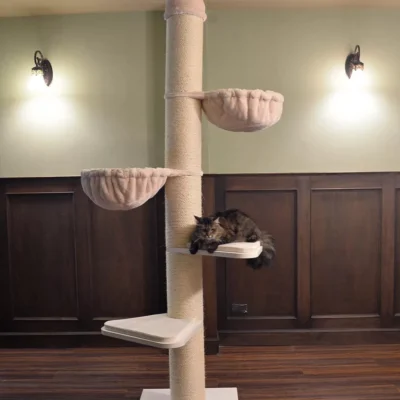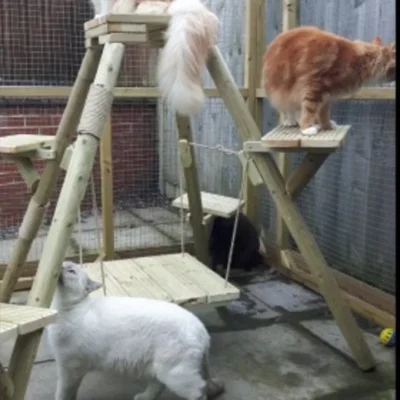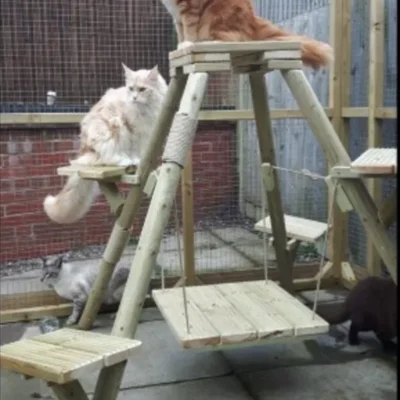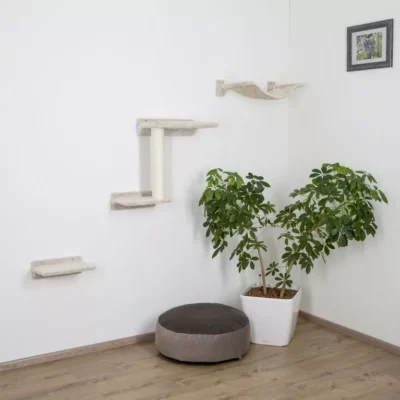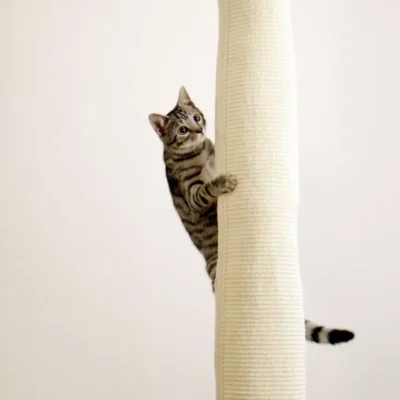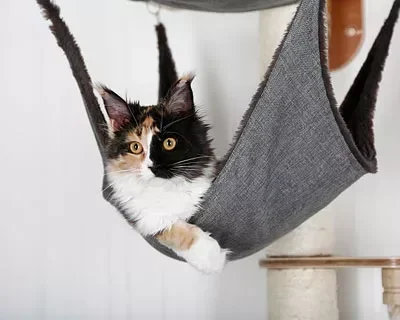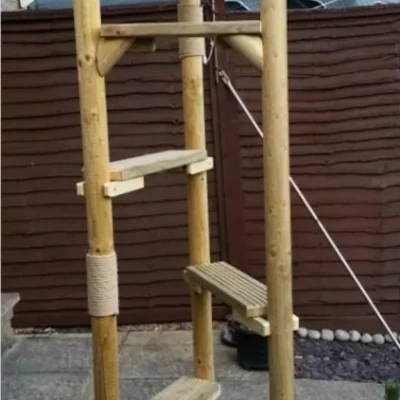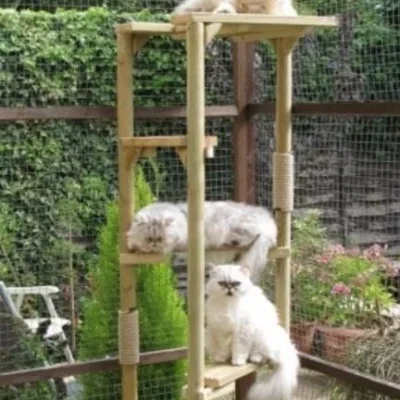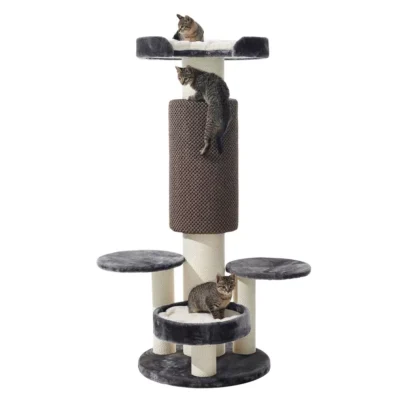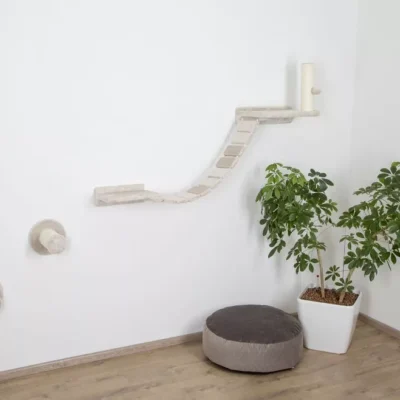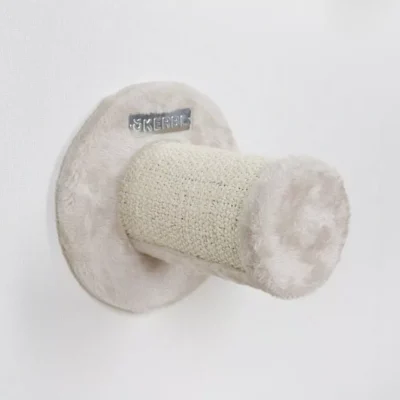0
The soothing, rhythmic purring of a cat is not only a source of comfort and delight for cat owners but also a subject of scientific curiosity. This unique vocal characteristic of felines has captivated both pet lovers and researchers for many years.
The essence of this article is to thoroughly investigate the science of cat purring, aiming to demystify the mechanisms and reasons that drive this fascinating feline behavior.
Purring Sounds Purring in cats originates in the brain. It starts when a repetitive neural oscillator sends consistent signals to the cat’s laryngeal muscles. These muscles then experience a rapid twitch, oscillating at a frequency of 25 to 150 vibrations per second (Hz).
This quick motion causes a distinct separation of the vocal cords during the entire breathing cycle, both during inhalation and exhalation. This phenomenon is what produces the characteristic purring sound. What makes this especially intriguing is that cats, along with a select few other animals, can sustain this purring through their breathing cycle without interruption, a trait not commonly found in the animal kingdom.
The act of purring involves a complex interplay of muscular movements within a cat’s larynx or voice box. As the cat inhales and exhales, the air interacts with these vibrating muscles, thereby creating the purring sound.
This sound production involves the rapid activation and deactivation of the laryngeal muscles, establishing a unique pattern of neural oscillation. This mechanism is what allows purring to be such a steady and continuous sound, remarkably not disrupting a cat’s breathing process.
Cats purr within a frequency range of 25 to 150 Hz, a spectrum known to possess healing properties in humans, including the promotion of bone density and healing. Moreover, the purring of cats is not monolithic; there are variations in frequency and tone that convey different messages or emotional states.
For instance, a higher-pitched purr might signal a request for care or attention, while a lower, steady purr often denotes a state of contentment and relaxation.
Purring in cats is much more than a mere sound; it is an intricate mode of communication and an indicator of a cat’s emotional and physical wellbeing. This fascinating vocal behavior showcases the complexity and depth of felines, serving multiple purposes including communication, healing, and providing comfort.
Gaining a deeper understanding of the science behind purring not only enhances our knowledge but also enriches our appreciation and connection with these enigmatic and cherished companions.
The Multifaceted Purposes of Purring in Cats
The enigmatic purring of cats has long fascinated both cat enthusiasts and the scientific community, leading to the development of various theories and hypotheses about its purpose. One prominent theory suggests that cats use purring as a self-soothing mechanism, particularly in situations where they might be distressed or in pain.
Another perspective proposes that purring serves as a form of communication, either with human companions or other cats, indicating feelings of contentment or expressing specific needs. From an evolutionary standpoint, some biologists believe that purring may have evolved as a low-energy strategy for maintaining muscle and bone health during periods of rest.
A widely recognized interpretation of purring is its association with a cat’s sense of contentment. Typically, when a cat is in a state of relaxation, such as during petting sessions or while basking in a cozy spot, it will often purr, which is commonly interpreted as an expression of happiness and comfort.
However, it’s crucial to acknowledge that cats also purr in various other contexts, suggesting that purring can represent a broader range of emotional states beyond just contentment.
Purring plays a pivotal role in feline communication. For example, kittens purr to signal to their mothers that they are receiving adequate nutrition while nursing. Adult cats, on the other hand, might use purring as a means to convey to their human caregivers their approachability and friendliness, or to solicit food and attention.
The subtleties in a cat’s purr, such as changes in tone, frequency, and volume, enable them to communicate complex messages, making purring a sophisticated and nuanced form of interaction.
Recent scientific research has revealed compelling evidence that purring may possess self-healing properties for cats. The frequency range of a cat’s purr, between 25 to 150 Hz, coincides with frequencies known to be beneficial for bone growth and healing in humans. This correlation suggests that purring could aid cats in recovering from injuries, alleviating pain and inflammation, and even promoting bone strength and repair.
Purring is also instrumental in forging and strengthening the bond between cats and their human companions. The calming effect of a cat’s purr can significantly reduce stress and promote a sense of tranquility in humans, enhancing feelings of peace and well-being.
This shared, soothing experience not only deepens the bond between a cat and its owner but also underscores the emotional richness and mutual benefits inherent in human-animal relationships.
In summary, the act of purring in cats serves a multitude of purposes, from communication and comfort to healing and bonding. This versatile and multifunctional behavior underscores the adaptability and complexity of cats, elevating them from mere pets to fascinating subjects of scientific study and emotional connection.
Deciphering the Complex Language of Cat Purrs
Cat purring is not just a single, uniform sound but a complex behavior encompassing a range of tones, volumes, and frequencies, each potentially indicative of different emotional or physical states.
This rich variety in a cat’s purr provides valuable insights into their feelings and needs. By carefully observing these nuances, cat owners can gain a deeper understanding of their feline companions, enhancing their ability to respond effectively to their cats’ various states and requests.
Identifying Contentment Purrs The contentment purr is perhaps the most familiar and cherished type of purr. These purrs are typically characterized by their soft, steady, and rhythmic nature, signaling that the cat is in a state of relaxation and happiness.
This kind of purring is often observed during moments of enjoyable interaction, such as when a cat is being gently petted, resting in a favored spot, or snuggled up with a beloved human or animal companion. Through the contentment purr, a cat expresses feelings of pleasure and comfort, reinforcing the bond between the cat and its caregiver.
Understanding Solicitation Purrs Solicitation purrs represent a more intricate form of purring. Cats commonly use this type of purr to communicate specific requests to their humans, typically for food or attention. These purrs tend to have a more urgent tone and may include a distinctive higher-pitched, mew-like sound intermingled with the purring.
This particular sound combination has been found to be quite effective in capturing human attention, suggesting an evolutionary adaptation by cats to communicate more effectively with their human caregivers.
Examining Distress or Discomfort Purrs Cats may also purr when experiencing distress or discomfort. In these instances, purring can act as a self-soothing behavior, helping the cat to manage its stress or pain.
A distress or discomfort purr might sound different from a contentment purr, often being higher-pitched or sounding more strained. It’s vital for cat owners to recognize these purrs as they may signal that the cat is under emotional stress or physical duress, necessitating care and attention.
Recognizing Purring During Injury or Illness Another intriguing aspect of feline behavior is purring during times of injury or illness. There is a belief among some experts that the low-frequency vibrations of a cat’s purr can facilitate healing and promote bone growth.
Therefore, a cat that purrs when not in an overtly comfortable or content state might be engaging in a form of self-healing. Such purrs may be more constant and exhibit less variation in tone, possibly reflecting the cat’s focus on recovery and healing.
In summary, the ability to discern and understand the different types of cat purrs can significantly enhance the relationship between cats and their human companions. Recognizing the various nuances in purring enables better care, improved response to the cat’s needs, and fosters a deeper emotional connection with these intriguing and affectionate creatures.
Purring in Diverse Feline Situations: A Comprehensive Look
In the midst of play and interaction, cats often exhibit purring, a behavior that accentuates the joyful and engaging nature of these moments. This type of purring, which occurs during play, signals a cat’s excitement and happiness, thereby enriching the bonding experience with its owner.
Playful activities, such as chasing after feather wands or following laser pointers, typically induce this kind of purring. The purring heard during playtime tends to be light and airy, mirroring the cat’s elated and stimulated mood.
Purring is also a common phenomenon when cats are in a relaxed state or even asleep. This purring style is usually soft and rhythmic, acting as a mechanism for further relaxation.
Cats often begin to purr as they settle into sleep in a cozy and secure environment. Such purring is indicative of a deep sense of safety and contentment, revealing the cat’s comfort with its surroundings.
Grooming, a vital part of feline life, is often accompanied by purring, particularly when it involves social interactions with other cats or humans. Mutual grooming between cats, or when a human pets and grooms a cat, elicits purring that signifies trust and comfort. This behavior demonstrates the cat’s ease in showing vulnerability and its enjoyment of social bonding.
Purring plays an essential role in the dynamics between a mother cat and her kittens. Kittens can purr from a very young age and often do so while nursing.
This purring is believed to communicate to the mother that the kittens are well and receiving adequate nutrition. For the mother, purring can act as a soothing mechanism, helping to calm her kittens and strengthen the maternal bond.
Case Studies and Real-Life Examples of Cat Purring
The Comfort-Seeking Cat: In a noteworthy instance, a cat named Muffin consistently began purring loudly whenever its owner, Sarah, showed signs of distress. Sarah observed that Muffin would seek her out and purr on her lap during her moments of sadness, providing not only self-comfort but also emotional support to Sarah.
The Healing Purr: Another case involved Oscar, a cat who had undergone surgery. Post-surgery, Oscar’s purring became noticeably more constant, supporting theories that purring can aid in self-healing, possibly contributing to pain relief and bone recovery.
Mother and Kittens Bonding: A study observing a litter of kittens noted that the mother cat would initiate purring as she settled down with her offspring, prompting the kittens to join in. This collective purring was particularly evident during nursing and grooming, serving to reinforce the maternal bond and ensure a sense of security among the kittens.
In conclusion, purring in cats is a multifunctional behavior utilized in a variety of contexts, from playful interactions and moments of relaxation to social bonding and healing processes. A deeper understanding of the different scenarios in which cats purr can significantly enhance our comprehension of, and connection with, these complex and fascinating animals.
How to Responsively Engage with Your Cat’s Purring
A heightened ability to interpret your cat’s purring can significantly enhance your capacity to react appropriately. It’s essential to discern the context in which your cat purrs. Are they at ease, seeking attention, or potentially facing a stressful situation?
Additionally, take note of the purring’s auditory characteristics, including volume, pitch, and rhythm. High-pitched or urgent-sounding purrs may indicate a specific need or request, while softer, consistent purrs often signal contentment.
When your cat is purring contentedly, it’s a clear indicator that they are feeling secure and content. During such moments, providing gentle petting or simply being a quiet, reassuring presence can strengthen your emotional connection.
Pay close attention to your cat’s preferred petting spots—some may enjoy head scratches or chin rubs, while others may prefer strokes along their back. Keep in mind that each cat has unique preferences, so being attuned to these individual differences is essential.
If your cat is purring while displaying signs of discomfort or distress, such as hiding or noticeable changes in behavior, it’s vital to respond with sensitivity. Offer a calm and comfortable space where your cat can retreat to.
Should the purring persist or if you observe alterations in their eating, grooming, or toileting habits, consulting a veterinarian is crucial, as this could indicate underlying pain or illness.
Cats thrive in environments that provide both security and stimulation. Ensure your cat has access to cozy resting spots, engaging toys, and appropriate scratching posts. Consistent feeding schedules, clean litter boxes, and access to safe indoor spaces or supervised outdoor areas are equally vital. A nurturing environment is conducive to your cat’s contentment, which may be mirrored in their purring.
Purring serves as a central element in fortifying the connection between you and your cat. By responding thoughtfully to your cat’s purring, you demonstrate your ability to comprehend and respect their emotional and physical needs.
Participate actively during playtime, address their solicitation purrs with attention or sustenance, and extend comfort when they appear distressed. Recognizing and valuing these communication moments can intensify the mutual trust and affection within your relationship.
In conclusion, effectively responding to your cat’s purring hinges on a combination of keen observation, empathetic understanding, and appropriate action. By tuning into the intricacies of your cat’s purrs and cultivating a loving and supportive environment, you can foster a profound and meaningful connection with your feline companion.
Conclusion
In the realm of our beloved feline companions, purring transcends being merely a pleasant sound; it emerges as a purr-fectly captivating form of communication. Our journey into the realms of the science, purposes, variations, and contexts of feline purring has unveiled a rich tapestry of emotions and needs encoded within those gentle vibrations.
Comprehending your cat’s purring becomes a powerful tool for fortifying the bond between you and your furry confidant. Whether it entails responding to contentment purrs with affectionate gestures, providing solace during moments of unease, or simply reveling in the shared warmth of a tranquil purring session, deciphering the enigma of feline purrs leads to a deeper connection and a more contented, healthier life for your cat.
So, the next time your feline companion cozies up on your lap, purring with evident contentment, take a pause to cherish the unique language they are sharing with you. With a blend of patience, attentive observation, and a sprinkling of love, you can navigate the nuanced symphony of their purring and reciprocate in kind, crafting a harmonious and enriching relationship that truly epitomizes the essence of feline companionship. Embrace the purr-fect language of cats, and let it serenade your shared escapades in the enchanting world of feline companionship.




